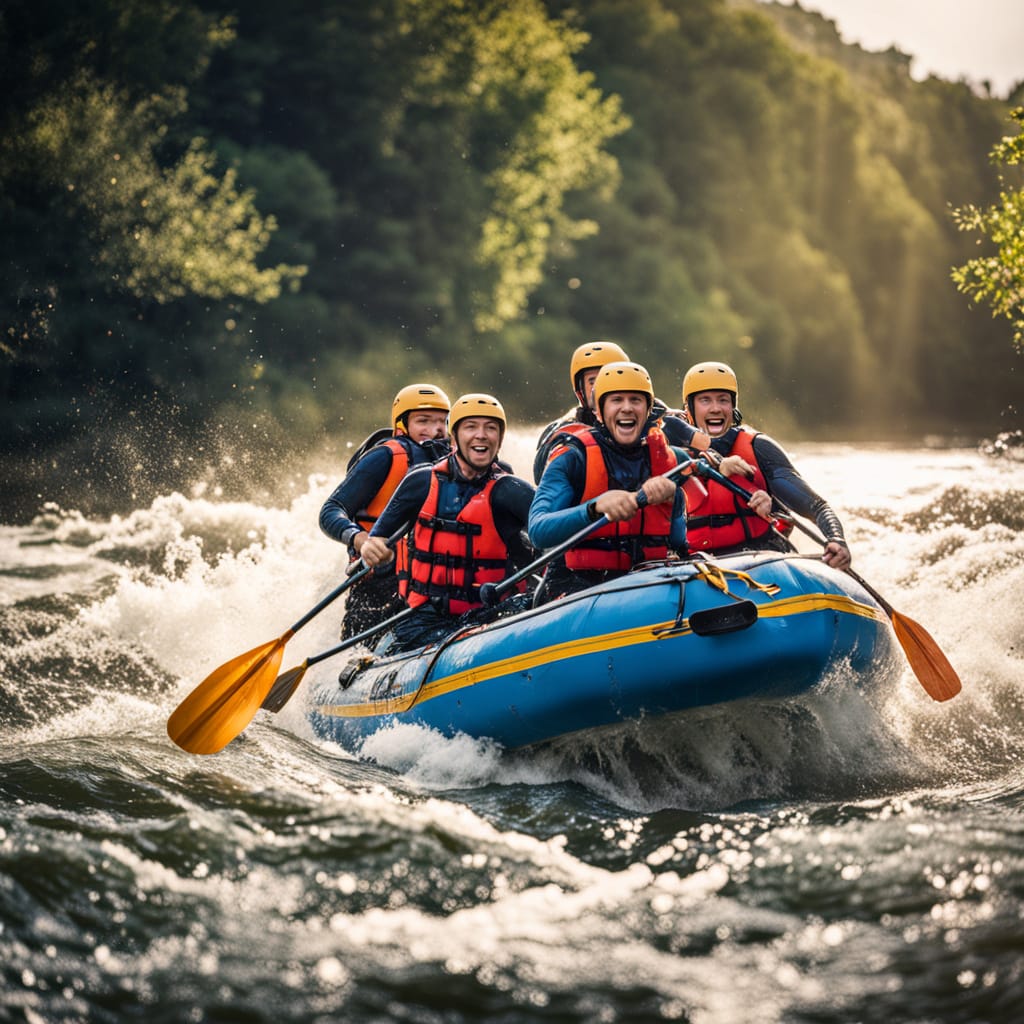
The Thrill and Charm of River Rafting
River rafting, an exhilarating outdoor activity, combines the thrill of navigating rushing waters with the serenity of nature. For decades, adventurers have been drawn to this sport, captivated by its unique blend of excitement and teamwork. River rafting offers something for everyone, from serene float trips to heart-pounding whitewater rapids. But how did this sport originate, and how has it grown into a global phenomenon? Let’s explore its history, global appeal, and how amateurs, professionals, and society engage with this thrilling activity.
The Origins and History
The roots of river rafting trace back to necessity rather than leisure. Indigenous communities and early explorers used rafts to navigate rivers, transport goods, and explore uncharted territories. The earliest documented use of a raft dates back to ancient Mesopotamia and Egypt, where simple wooden vessels floated along major rivers like the Nile and Euphrates.
Modern river rafting as a recreational activity began in the mid-19th century. In 1842, Lieutenant John Fremont led a notable expedition down the Platte River in the United States, employing a rubber raft designed by inventor Horace Day. This marked the beginning of recreational rafting. Over time, rafting gained popularity as an adventurous pursuit rather than just a practical means of transportation.
The sport’s evolution accelerated during the 20th century with technological advancements. The invention of inflatable rafts made the activity more accessible and safer. Post-World War II, surplus rubber pontoons became widely available, leading to the rise of commercial rafting expeditions. By the 1970s, dedicated rafting companies offered guided tours, and river rafting became a prominent adventure sport worldwide.
The Global Popularity
Today, river rafting enjoys immense popularity across continents, attracting millions of participants annually. North America remains a hub for rafting enthusiasts. Rivers like the Colorado in the United States and the Ottawa in Canada are iconic destinations. These locations offer rapids of varying difficulty, catering to both beginners and experts.
In South America, the Amazon and Futaleufú Rivers provide breathtaking settings for rafting. Europe is no stranger to the sport either. The Sjoa River in Norway and the Inn River in Switzerland are renowned for their challenging rapids. Asia has emerged as a hotspot, with India’s Ganges River and Nepal’s Sun Kosi River offering world-class experiences. Australia and New Zealand round out the global appeal, boasting pristine rivers like the Franklin and Shotover.
The global allure of river rafting stems from its accessibility and versatility. Whether one seeks a leisurely float or an adrenaline-pumping ride, rivers worldwide offer diverse options. The sport’s ability to connect people with nature while fostering teamwork and camaraderie further enhances its appeal.
Amateur River Rafting: Opportunities for Youth and Schools
River rafting isn’t just for seasoned adventurers. It’s an excellent activity for amateurs, particularly youth and school groups. Many organizations offer beginner-friendly rafting programs tailored to children and teenagers. These programs prioritize safety while teaching basic paddling techniques and river navigation skills.
Youth-focused rafting trips often take place on calm rivers with minimal rapids. Such settings allow participants to build confidence without feeling overwhelmed. Schools frequently organize rafting excursions as part of outdoor education programs. These trips encourage students to develop teamwork, leadership, and problem-solving skills in a dynamic environment.
Community rafting events and summer camps also play a significant role in introducing young people to the sport. Instructors guide participants through rafting basics, emphasizing environmental stewardship and respect for nature. By engaging with the sport early, many young rafters develop a lifelong appreciation for outdoor adventure.
Amateur rafting isn’t limited to youth. Families, corporate teams, and casual adventurers can enjoy the sport through guided tours and recreational clubs. The inclusive nature of rafting ensures that anyone can participate, regardless of prior experience.
Professional Leagues and Competitions in River Rafting
River rafting has evolved beyond recreation, becoming a competitive sport with organized leagues and events. The International Rafting Federation (IRF) governs competitive rafting worldwide, overseeing rules, safety standards, and international championships. These events attract elite athletes who navigate challenging rapids in high-stakes races.
The World Rafting Championship, held biennially, is the pinnacle of competitive rafting. Teams from over 30 countries compete in various disciplines, including sprint, slalom, and downriver races. The competition highlights the skill, endurance, and teamwork required for success.
Regional leagues and national championships also promote professional rafting. In Europe, the European Rafting Cup features top teams battling it out on iconic rivers. Similarly, countries like Japan, Brazil, and the United States host their own domestic tournaments, showcasing local talent and fostering community support.
Professional rafting has inspired many to pursue the sport at a higher level. It has also boosted tourism in host regions, as fans and athletes flock to witness the action. The competitive aspect of river rafting continues to grow, pushing the boundaries of what athletes can achieve.
The Social and Political Significance
River rafting transcends its status as an adventure sport, carrying profound social and political implications. Environmentally, the sport promotes conservation and awareness. Rafting enthusiasts often become advocates for preserving rivers and surrounding ecosystems. Organizations like American Rivers and the World Wildlife Fund collaborate with the rafting community to protect waterways from pollution and overdevelopment.
Socially, rafting fosters inclusivity and community engagement. Many programs introduce underserved communities to the sport, providing opportunities for outdoor recreation. Nonprofit organizations use rafting as a platform to promote youth development, mental health awareness, and rehabilitation for veterans.
Politically, river rafting has influenced debates over water rights and land use. Dams and hydropower projects often threaten rivers popular for rafting. Advocacy groups work to preserve these waterways, balancing energy needs with recreational and environmental priorities. High-profile cases, such as the fight to protect the Colorado River, highlight the intersection of rafting and activism.
River rafting also strengthens local economies. Tourism generated by rafting supports small businesses, from guiding companies to accommodations. This economic impact underscores the sport’s broader significance beyond recreation.
The Rules and Basics of River Rafting
Understanding the rules of river rafting ensures safety and enjoyment for all participants. While the specifics may vary depending on the river and difficulty level, some universal guidelines apply.
Teamwork is crucial: Rafting involves coordinated paddling and communication among all team members. Listening to the guide’s instructions is essential for navigating rapids effectively.
Know your rapids: Rivers are classified into six grades based on difficulty. Grade I features gentle currents, while Grade VI involves extreme and dangerous rapids. Participants should choose rivers suited to their skill level.
Wear appropriate gear: Life jackets, helmets, and wetsuits are mandatory for safety. Proper footwear, such as water shoes, provides grip and protection.
Follow safety protocols: In case of falling overboard, participants must float on their backs with feet pointing downstream. This position helps avoid injuries from underwater obstacles.
Environmental respect: Rafters should adhere to “Leave No Trace” principles, avoiding littering and respecting wildlife. Conservation is integral to sustaining the sport for future generations.
By adhering to these rules, participants can enjoy a safe and memorable rafting experience. Guides play a key role in ensuring safety, offering expertise and support throughout the journey.
Conclusion
River rafting continues to capture the imagination of adventurers worldwide. From its humble beginnings to its modern prominence, the sport’s history reflects humanity’s enduring connection with rivers. Whether experienced as a leisurely pastime or a competitive pursuit, rafting unites people through shared challenges and unforgettable experiences.
The sport’s global popularity underscores its versatility and appeal. Opportunities abound for amateurs, youth, and professionals to engage with river rafting in meaningful ways. Beyond recreation, the sport’s environmental, social, and political significance highlights its broader impact.
With proper guidance and adherence to safety rules, river rafting offers a thrilling way to explore nature while building camaraderie and resilience. As the sport continues to grow, its legacy as an adventure for all ages and abilities remains stronger than ever.





